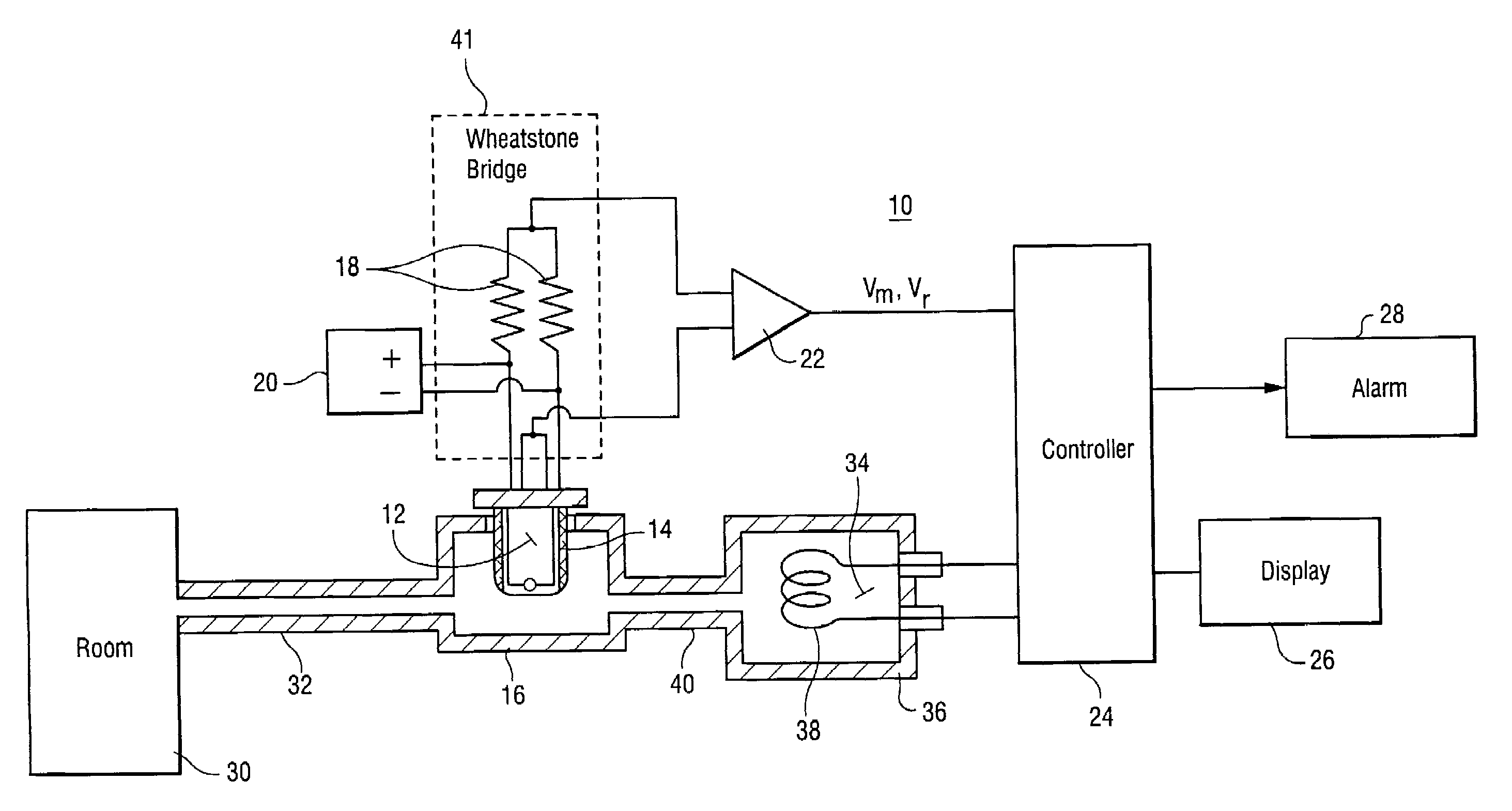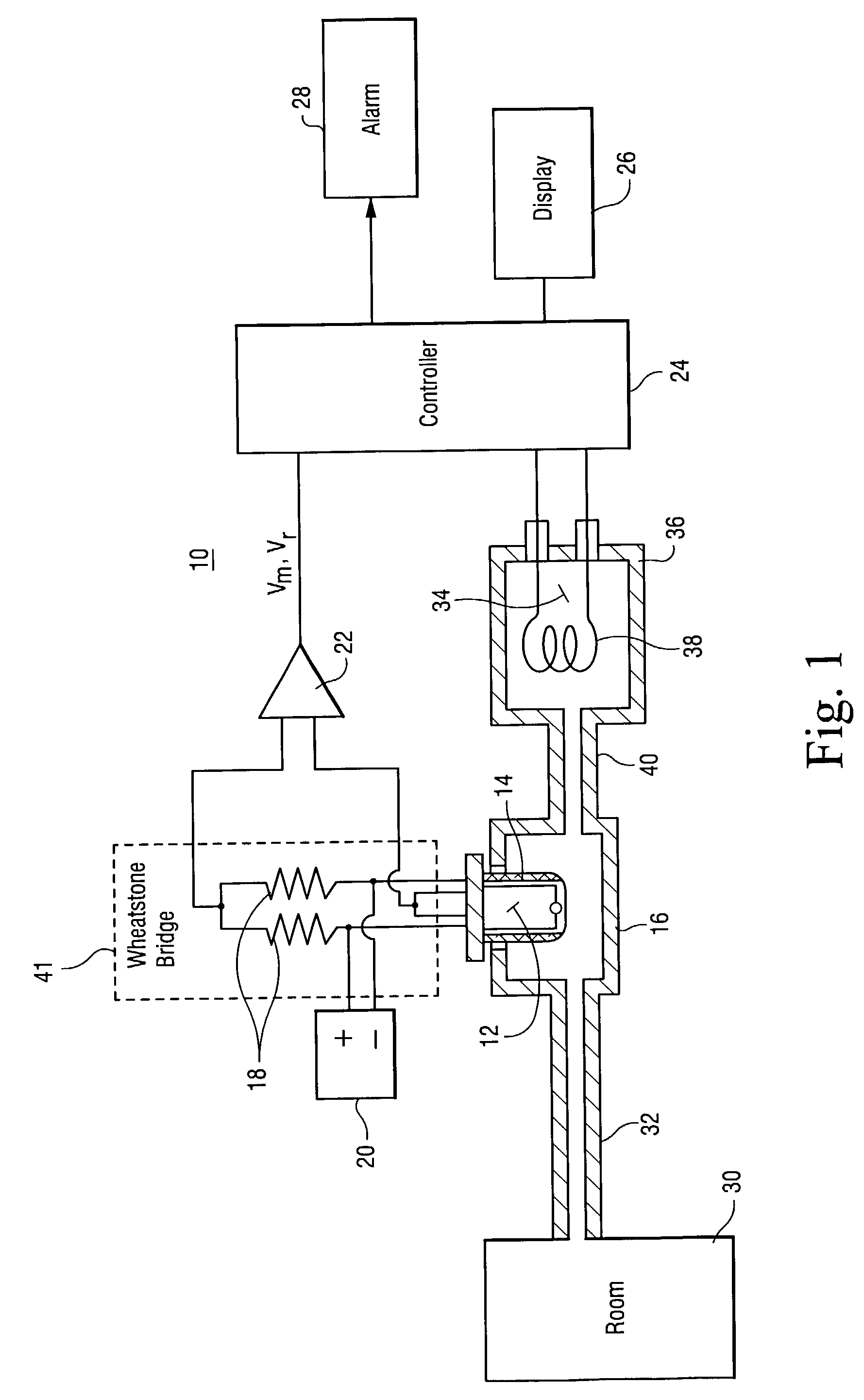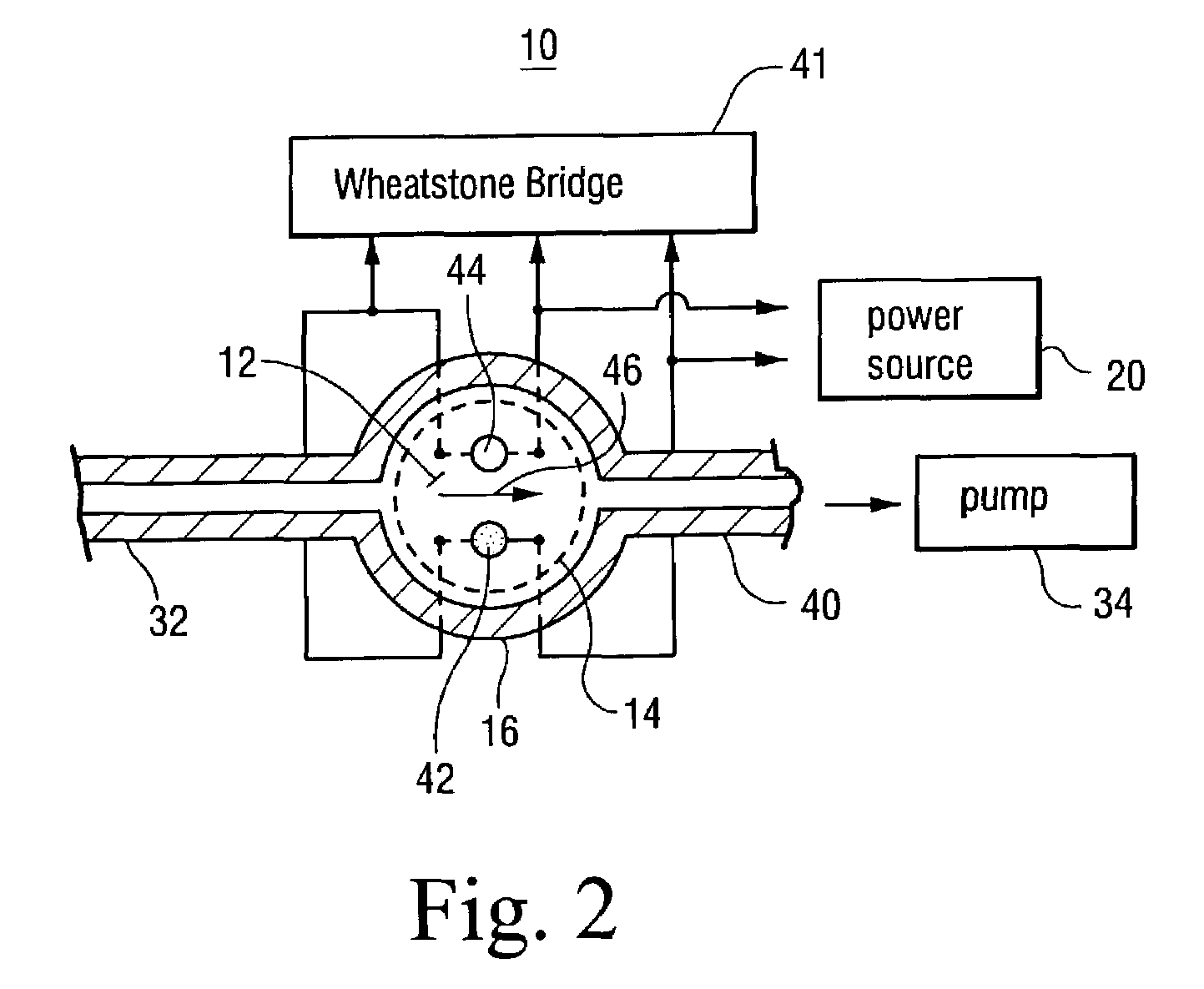Combustible gas detector having flow-through sensor container and method for measuring such gases
a gas detector and sensor technology, applied in the field of combustion gas detectors having flow-through sensor containers and methods for measuring such gases, can solve the problems of reducing sensor sensitivity, prolonging sensor response time, and provoking false sensor readings
- Summary
- Abstract
- Description
- Claims
- Application Information
AI Technical Summary
Benefits of technology
Problems solved by technology
Method used
Image
Examples
Embodiment Construction
[0019]FIG. 1 shows a combustible gas detector 10 having a combustible gas sensor 12 in a porous or other protective enclosure 14 and housed in a flow-through chamber 16. In this design, the protective enclosure 14 is optional and is shown because it is commonly installed by sensor manufacturers in commercially available catalytic sensors. The chamber 16 is impervious to ambient gas diffusion and may be separated from an ambient gas volume 30 by a substantial distance, e.g. up to 10 meters. The chamber has a sample gas inlet pneumatically connected to volume 30 by a diffusion limiting passage 32, and an exhaust passage 40. The passage 32 essentially prevents the diffusion of ambient gas from the volume 30 into the chamber 16 while allowing to drawing in a gas sample by convection. The sensor 12 in the chamber 16 may be a catalytic combustible sensor such as, for example, a conventional catalytic bead sensor having a catalytic sensing bead and a reference bead that are connected as th...
PUM
| Property | Measurement | Unit |
|---|---|---|
| interior diameter | aaaaa | aaaaa |
| interior diameter | aaaaa | aaaaa |
| length | aaaaa | aaaaa |
Abstract
Description
Claims
Application Information
 Login to View More
Login to View More - R&D
- Intellectual Property
- Life Sciences
- Materials
- Tech Scout
- Unparalleled Data Quality
- Higher Quality Content
- 60% Fewer Hallucinations
Browse by: Latest US Patents, China's latest patents, Technical Efficacy Thesaurus, Application Domain, Technology Topic, Popular Technical Reports.
© 2025 PatSnap. All rights reserved.Legal|Privacy policy|Modern Slavery Act Transparency Statement|Sitemap|About US| Contact US: help@patsnap.com



